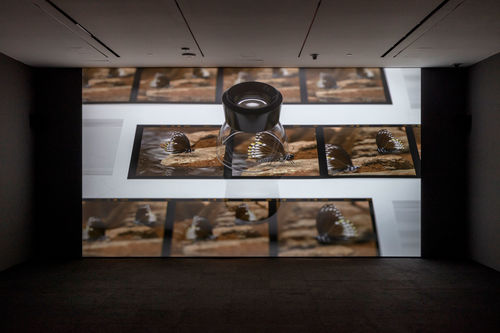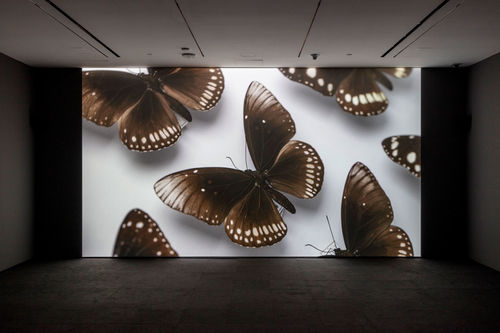
Jeffrey Stuker
Jeffrey Stuker was born in Colorado in 1979. He received an MFA from Yale University, where he also taught critical theory and art from 2006 to 2013. Stuker is currently a coeditor of the journal Effects and the director of the Seeld Library, a project bringing together a community of thinkers whose scholarly and artistic practices explore the phenomenon of second nature—the representation of socially constructed values as if they were the outcome of an inevitable biological process. A central focus of Stuker’s work is mimicry—both in nature, where it provides a strategy for the survival of certain species, and in digital imaging, which can manifest hyper-lifelike representations of reality. Stuker creates carefully rendered computer-generated images, planting coded historical, scientific, and industrial references within. These images exist as part simulation and part documentation; their factualness remains elusive or, rather, allegorical.
In his projects for Made in L.A. 2020, Stuker further examines the relationship between synthetic and organic, engaging and considering mimicry as a metaphor for how organisms relate to their environments. Through this work the artist poses questions: “Does mimicry represent the adjustment of life to its external circumstances in the name of survival? Or is mimicry productive of that environment itself?” The video on view—produced exclusively through 3-D rendering processes (and made during the extended period of social distancing, itself a self-contained system, in the early months of the COVID-19 pandemic)—foregrounds one such mimetic species, the Papilio clytia, also known as common mime, which imitates the markings of the Euploea core. The butterfly specimens are pinned, “dead” and animated only by a simulation of a gliding camera hovering over them. The voice-over, scripted by the artist, narrates the story of the species via obscure anecdotes as well as wide-reaching scientific information such as the origins of the Monte Carlo algorithm, which is both a subject of the video and the tool that produced the images that constitute it. Finally, the analogy comes full circle, since mimicry is, after all, an aesthetic practice; the natural processes described here find parallels in the artifice of making art.
In Made in L.A. 2020: a version, the artist’s work is present in two institutions, across Los Angeles. See Jeffrey Stuker's work on view at The Huntington.
BIOGRAPHY
Jeffrey Stuker was born in Colorado in 1979. He received a BFA from the School of the Museum of Fine Arts at Tufts University and an MFA from Yale University, where he also taught from 2006 to 2013. Stuker is currently a coeditor of the journal Effects and the director of the Seeld Library, a project bringing together a community of thinkers whose scholarly and artistic practices explore the phenomenon of second nature—the representation of socially constructed values as if they were the outcome of an inevitable biological process. His artistic practice is concerned with the synthetic characteristics of seemingly organic processes. His particular focus on mimicry—as we see it in nature, used as a strategy for the survival of certain species—points to resemblances between the power of the electronic image to captivate and the lures used by animals to avoid capture in the jaws of their predators. Producing extremely accurate computer-generated imagery that he infuses with historical, scientific, or industrial references, Stuker exemplifies through his films an age of images without actual referents, creating a point of contact between the subject the work depicts and the technology that made the depiction possible. His work has been exhibited at Garden, Los Angeles (2019); Museum of Contemporary Art, Los Angeles (2018); Hunter/Whitfield, London (2016); and Full Haus, Los Angeles (2015).







